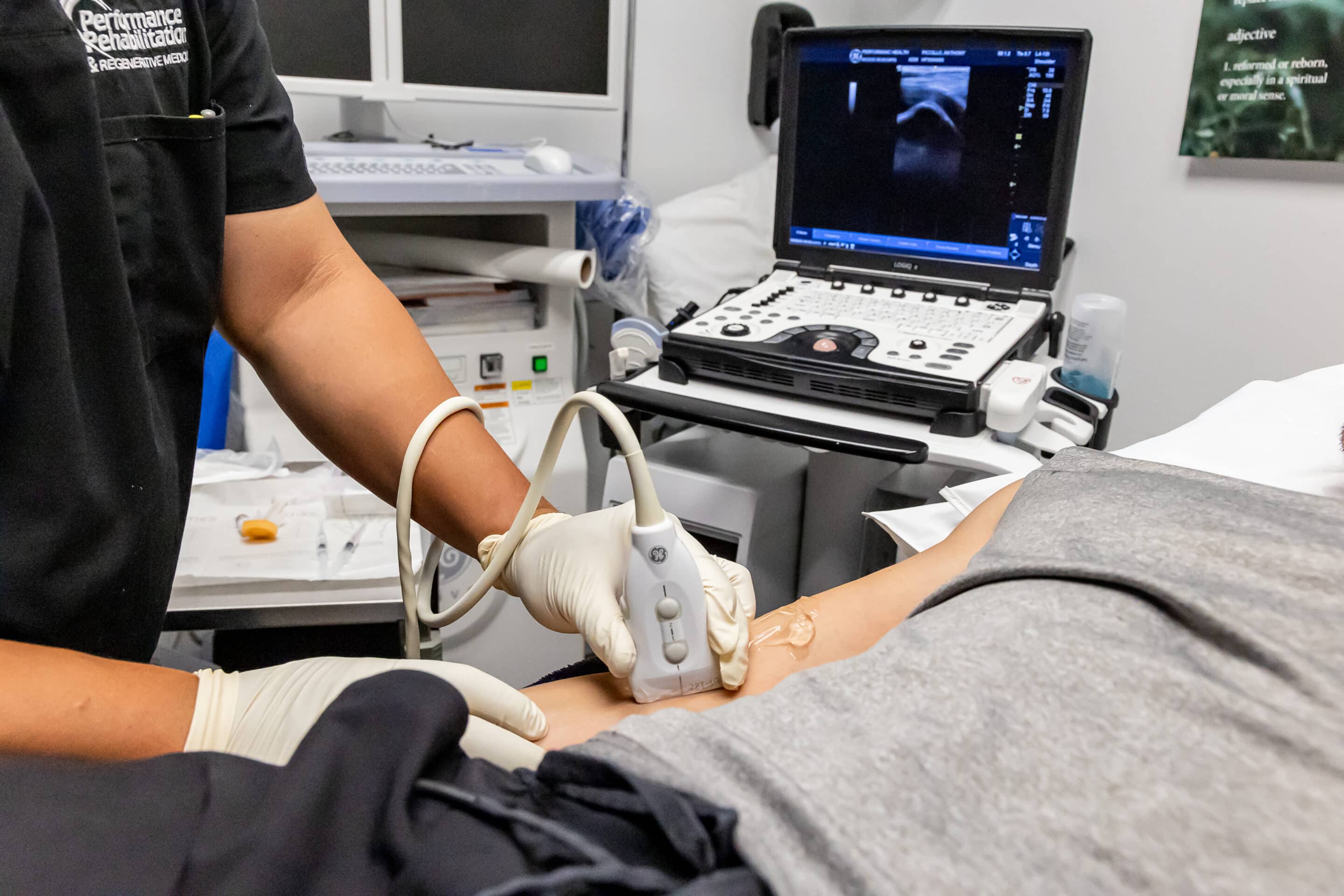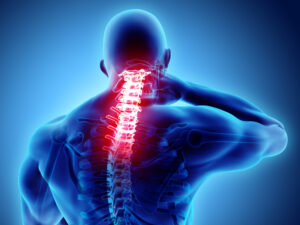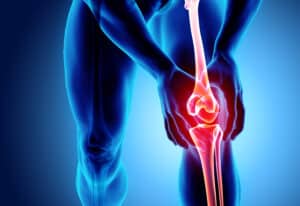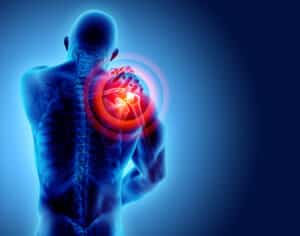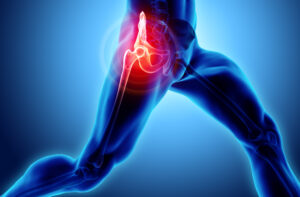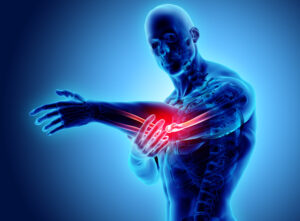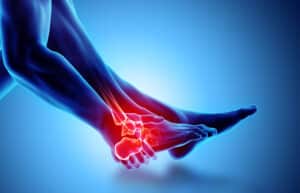Non-Surgical Spinal Decompression for Low Back Pain
Low back pain is a condition that is thought to affect up to 80% of individuals in their lifetime.1 The effects are not simply of a personal inconvenience; it can also affect work performance. Both the corporate world and industrial workplace have experienced a decrease in productivity and increase in absenteeism. Oftentimes, individuals go without care for conditions that can be treated with effective and long-lasting results.
Pain in the low back can be attributed to many causes and tissue types. These causes include spinal facet injury, muscle spasm, degeneration of the disc, herniation of the disc, spinal stenosis, and referral from other sources such as the sacroiliac joint. Often an individual can have multiple causes at once. Common complaints include stiffness, dull sensations, sharp sensation and radiation of pain often into the leg.
Discogenic pain, meaning pain originating from the intervertebral disc, is a common injury that can be felt at the source of pain as well as referred pain into the hip region, groin and radiate into the leg. This is often accompanied by muscle spasms for a brief period. Often referred to as a disc herniation, bulge or protrusion, disc injury can be i ncredibly painful, impacting even basic daily activities.
ncredibly painful, impacting even basic daily activities.
The intervertebral disc consists of two parts, an inner layer and an outer layer. The inner layer called the nucleus pulposus consists of a jelly-like substance. The outer layer called the annulus fibrosus is a series of overlapping fibers that surrounds the nucleus. The disc is intended for shock absorption and protection of the spinal column. When the disc is injured, the annular fibers are damaged causing the nucleus to be unevenly distributed and protrude through the outer layer. This injury causes an inflammatory process in the area of the spinal cord and exiting nerve roots, causing pain to the surrounding tissue.1
Many treatments have been used for these conditions with varying results. 2 Common treatments include: analgesics, physical therapy, chiropractic manipulative therapy and acupuncture. These treatments have shown to be effective for many patients but often additional treatments have been used to obtain more effective results.
One treatment option for chronic low back pain of a discogenic nature is spinal decompression. Spinal decompression is a traction-based therapy, which is operated by a programmable control unit. The motorized unit is understood to provide an effective means of decompression due to the varying intensity and controlled patient position. Oftentimes, muscle-guarding increases, varying the pull weights and decreasing the efficacy of the treatment to the target area. The goal of the treatment is to reduce the pressure on the disc and rehydrate the area in order for the disc to heal most effectively and reduce symptoms.
There have been many spinal decompression systems used in the clinical setting to date. One unit used in multiple studies is the DRX9000 by Axiom Worldwide. This system provides a controlled variable pull based on the weight and tolerance of the patient. It is a splittable design, which reduces lumbar muscle tension. The DRX9000 contains a shoulder and chest harness as well as a knee rest to reduce pelvic rotation. The system also controls the angle of pulling force in order to target specific injured segments within the lumbar spine.
A retrospective chart review was performed by Macario et al on 94 patients over multiple years, examining the efficacy of the DRX9000 on participants with chronic low back pain of a discogenic nature.3 The review examined the results of 8 weeks of decompression treatment on participants who had at least a 12-week history of low back pain. Each participant was determined to have pain generating from an intervertebral disc injury found in relevant history, examination and Magnetic Resonance Imaging (MRI). The data was collected from one group with three treatment locations. Sample size from each location was based on a proportion of total patients treated in each clinic.
The review provided outcome measures based on a verbal numerical pain intensity rate, analgesic use and activities of daily living. Outcomes were measured before initial treatment began and following completion of treatment at the 8-week mark. Participants were also given a long-term follow-up phone call at 4-week post treatment completion. Prior to each session, patient received myofascial treatment. Muscle stimulation and ice were applied following decompression.
The pattern of pain reference included 89% nonspecific, 23% radiation to the buttock, 62% radiation to the thigh or lower leg. Pain was more severe in the leg than the back in 8% of patients and 13% of patients had previously had surgery to their lumbar spine. Prior to decompression, those studied had received other types of treatments: 64% had received chiropractic manipulative therapy, 45% received physical therapy, 35% received epidural steroid injections, 21% received massage therapy and 14% received acupuncture treatments. There was no control group and the prior therapies were not standardized.
Prior to the series of decompression treatments, patients had a mean verbal numerical pain intensity score (0-10 on an 11-point scale) of 6.05 ranging from 2-10 with median score of 6. Following 8 weeks of treatment the mean score decreased to 0.89 with a range of 0-5 and median of score of 1. Analgesic use and activities of daily living were also shown to have improved.
During the follow-up, 29 participants responded to questions. 83% of participants reported an improvement in back pain and satisfaction with a mean score of 8.55 based on a 0-10 scale. None of the patients reported receiving post-procedure surgery.
Apfel at al performed a retroactive cohort study of comparing pain levels and changes in intervertebral disc heights following similar treatment as the Macario et al study.4, 5 Participants were given 6-weeks of decompression treatment using the DRX9000 system. Participants were required to have at least a 3 out of 10 rating on the verbal numerical intensity scale and had low back pain of a discogenic nature. Each participant also had computerized tomographic studies of their lumbar spine no more than two months prior to and within one day of the final treatment in the 6-week series of care. Due to the strict criteria for the study, there were a limited total number of 30 participants.
Following the series of treatments, there was a decrease in verbal numerical intensity scale from a mean of 6.2 to 1.6. The disc heights also increased by an average of 1.7mm, from 7.5 to 8.8. Apfel et al hypothesizes that with each millimeter of disc height gained, a 1.86 reduction is seen in the numerical point scale. This interpretation although true of this study cannot be applied to each individual patient as the scale does no allow for figures below zero.
As suggested by each study, decompression to treat chronic low back pain of a discogenic nature shows promising results. In each study there were no adverse reactions to the decompression therapy and it is indicated to be a favorable non-surgical solution. Randomized, placebo-based studies are suggested to strengthen the body of research at this time.
About the Authors
Joseph Mejia D.O., F.A.A.P.M.& R, is a graduate of University of Michigan and West Virginia School of Osteopathic Medicine. He is Board Certified in Physical Medicine& Rehabilitation and Sports Medicine. Dr. Mejia received his Fellowship Training in Interventional Pain Management from University of Medicine and Dentistry. He has advanced training in Regenerative Medicine and is the Medical Director and Partner of Performance Rehabilitation & Regenerative Medicine.
John F. Ellis, D.C. is a graduate of Logan Chiropractic College. He is a Board Certified Chiropractic Physician with licenses held in New Jersey and New Hampshire. His past research work involves human performance pertaining to orthopedic conditions. Dr. Ellis is a Chiropractic Physician at Performance Rehabilitation & Regenerative Medicine.
References:
1.Cli Zhang Yg, Guo Tm, Guo X, Wu Sx: Clinical diagnosis for discogenic low back pain. Int J Biol Sci 2009, 5:647-658.
2. Shen FH, Samartzis D, Andersson GB. Nonsurgical management of acute and chronic low back pain. J Am Acad Orthop Surg. 2006;14:477–487. < https://www.jaaos.org/content/14/8/477.long>
3. Macario A, Richmond C, Auster M, Pergolizzi JV: Treatment of 94 outpatients with chronic discogenic low back pain with the DRX9000: a retrospective chart review. Pain Pract 2008, 8:11-17.
4. Apfel et al., Restoration of disk height through non-surgi- cal spinal decompression is associated with decreased discogenic low back pain: a retrospective cohort study BMC Musculoskeletal Disorders 2010, 11:155

